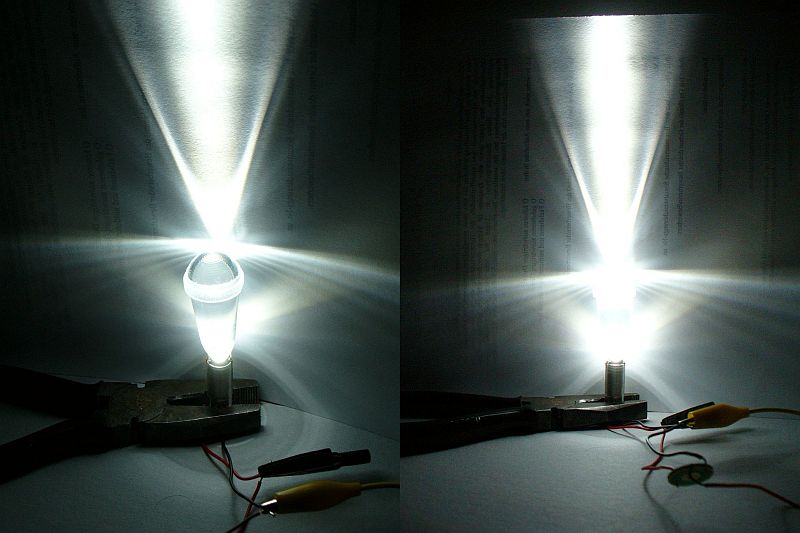It's already more than 10 years ago. One day, I got curious... Collimator lens vs reflector, which one would be better? Regarding this question, I think I am not alone, because I could find some other threads related to the same question.
It was a very hard-to-answer question, so the solution I found was having them together. To this end, a thin layer of aluminum was vapor deposited on the back of collimators. In the next figure, the left hand side is an aluminum deposited collimator, and the right hand side is a normal collimator.

unfortunately, this project was not so successful, because I didn't see any noticeable improvement of brightness even after the aluminum deposition. Maybe, that is because the backside leakage of collimators is quite negligible.
It was a very hard-to-answer question, so the solution I found was having them together. To this end, a thin layer of aluminum was vapor deposited on the back of collimators. In the next figure, the left hand side is an aluminum deposited collimator, and the right hand side is a normal collimator.
unfortunately, this project was not so successful, because I didn't see any noticeable improvement of brightness even after the aluminum deposition. Maybe, that is because the backside leakage of collimators is quite negligible.


